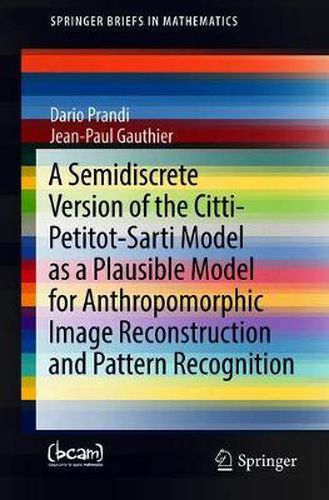Readings Newsletter
Become a Readings Member to make your shopping experience even easier.
Sign in or sign up for free!
You’re not far away from qualifying for FREE standard shipping within Australia
You’ve qualified for FREE standard shipping within Australia
The cart is loading…






This title is printed to order. This book may have been self-published. If so, we cannot guarantee the quality of the content. In the main most books will have gone through the editing process however some may not. We therefore suggest that you be aware of this before ordering this book. If in doubt check either the author or publisher’s details as we are unable to accept any returns unless they are faulty. Please contact us if you have any questions.
This book proposes a semi-discrete version of the theory of Petitot and Citti-Sarti, leading to a left-invariant structure over the group SE(2,N), restricted to a finite number of rotations. This apparently very simple group is in fact quite atypical: it is maximally almost periodic, which leads to much simpler harmonic analysis compared to SE(2). Based upon this semi-discrete model, the authors improve on previous image-reconstruction algorithms and develop a pattern-recognition theory that also leads to very efficient algorithms in practice.
$9.00 standard shipping within Australia
FREE standard shipping within Australia for orders over $100.00
Express & International shipping calculated at checkout
This title is printed to order. This book may have been self-published. If so, we cannot guarantee the quality of the content. In the main most books will have gone through the editing process however some may not. We therefore suggest that you be aware of this before ordering this book. If in doubt check either the author or publisher’s details as we are unable to accept any returns unless they are faulty. Please contact us if you have any questions.
This book proposes a semi-discrete version of the theory of Petitot and Citti-Sarti, leading to a left-invariant structure over the group SE(2,N), restricted to a finite number of rotations. This apparently very simple group is in fact quite atypical: it is maximally almost periodic, which leads to much simpler harmonic analysis compared to SE(2). Based upon this semi-discrete model, the authors improve on previous image-reconstruction algorithms and develop a pattern-recognition theory that also leads to very efficient algorithms in practice.